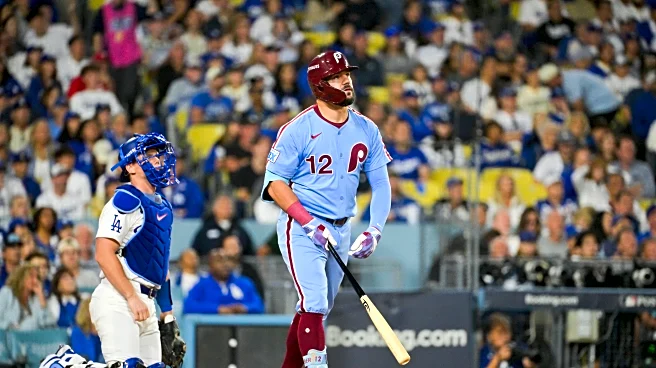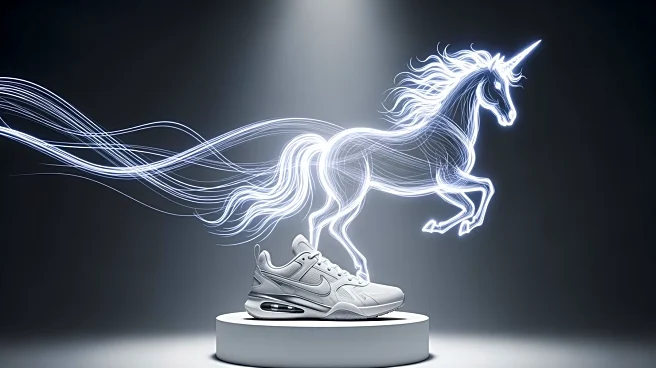The 2025 World Series proved to be an all-timer, as a hard fought and outstanding series came down to one of the greatest Game 7’s in the sports long history. In the end, the Toronto Blue Jays squandered
a few too many chances to score, while the Los Angeles Dodgers roared back with timely solo shots from talented veteran postseason performers while riding the iron arm and will of Yoshinobu Yamamoto to a second straight World Series championship.
Of course this has only served to re-ignite ongoing debates and complaints about the Dodgers payroll, and growing divide between the top teams and the rest of the league. Now that we’re a little more removed, with the offseason proper now underway, let’s get into it a bit.
We can debate how serious it is, but Major League Baseball certainly has a problem in its lack of spending parity between teams. This isn’t unusual in baseball, but the trend is particularly sharp right now. Running a top tier payroll usually doesn’t work as well as it has for the Dodgers, but it’s obvious that winning on a huge payroll, with the ability to sign the top names while at the same time absorbing free agent mistakes that would cripple a smaller payroll club for years, is a lot easier.
There are quite a few teams in the top tier of spenders who aren’t getting done, but that’s partly because the Dodgers are just doing it better. At the same time we have a lot of franchises around the game that just don’t look like they have any hope to be competitive, both because of their market size and simply because ownership doesn’t see the benefit in trying that hard.
The Dodgers have brilliantly combined the scouting, player development, data crunching, and smart trades of Andrew Friedman’s old Tampa Bay Rays teams with the financial firepower to out-compete the other top spending teams in the league, not just in terms of players, but coaches, analysts, facilities, medical staff, the works. That effort has built them up over the past decade, and the final, huge piece of the puzzle was successfully landing Shohei Ohtani during the 2023-2024 offseason, establishing themselves as the top destination for a country that is rapidly becoming a major player in the sport. That acquisition led directly to signing Yoshinobu Yamamoto the same offseason, and the result is now at least a modest dynasty.
The question is whether this is ultimately good or bad for baseball. There’s a pretty good case to be made on both sides.
Sports thrive on narratives, and they thrive on star players on the game’s biggest stages. In the wider sports world, baseball has featured less and less among the top stories in the sports world over the last few decades.
Over the last two seasons, while various other superstars around the league either can’t sniff a World Series or even the postseason in general, the Los Angeles Dodgers have put a host of the game’s biggest stars on its biggest stage and watched them become postseason legends. Ratings continued their turnaround nationally this year, while international interest continues to grow rapidly. All of Canada watching certainly added a boost to the World Series rating this year, but the Dodgers are driving a lot of the increase in viewership, particularly worldwide. This is very good for baseball and baseball’s future as it s popularity continues to spread beyond the Americas.
For years, the game’s biggest star, Shohei Ohtani, toiled with the Angels alongside future Hall of Famer Mike Trout. The game’s greatest duo never saw the postseason because they could never build a good supporting cast. Now he’s been showcased in back-to-back World Series and collected two rings in two years with the Dodgers.
And it’s not as thought the Dodgers are untouchable. Their spending power allowed them to overcome a ton of injuries and mediocre performances. The Toronto Blue Jays still had every opportunity to defeat them and it took extra innings in Game 7 for the Dodgers to finally prevail. Of course, the Blue Jays are spending a lot themselves.
There’s also the possibility that we’re nearing peak Dodgers. The current roster is built around star players mostly in their early to mid-30’s, several of whom had down years in 2025. They certainly have the payroll space and the scouting and development chops to continue ruling the NL West for many years to come, but it’s very far from a guarantee that they’ll be able to re-create their success of the past two seasons over the rest of the decade.
Now for the ruining part.
The Los Angeles Dodgers finished this year with an estimated $396 million on their payroll. The Mets are at $340 million, bravely illustrating that money alone can’t always buy your way to the postseason, let alone a World Series. The Yankees spent $296 million. The Phillies $291 million. The Blue Jays were at $258 million. No one else is really close, though seven other teams check in with payrolls over $200 million.
So this isn’t just a Los Angeles Dodgers issue, but they are the most obvious and most successful of the handful of top payroll teams around the league. Teams like the Yankees, Mets, Phillies, Blue Jays, and others are trying to buy championships too, they just aren’t as good at it, and now through Ohtani, the Dodgers have opened up a direct pipeline to Japan with many of the top stars there viewing the Dodgers as the marquee destination in the sport.
So, you don’t have to spend $300 million or more to win a championship, but it’s pretty clear that you can’t have a payroll in the lower third of the league and win one either. We can go back to the Atlanta Braves in 2021, or the Houston Astros of 2017, or a little further back to the Kansas City Royals in 2015 to find World Series champs with modest payrolls, but they were still roughly in the middle tier of teams and certainly exceptions more than rules.
The remedy of a salary cap with expanded revenue sharing throughout the league is often proposed to limit the disparity in team payrolls around the league. Getting a cap has proven extremely difficult, and it’s debatable that it would even work. It’s still just a half measure that only addresses the big spender side of the problem.
Without a system that protects the players share of the pie while also pushing low payroll teams to operate more effectively and spend a more competitive payroll with some kind of payroll floor, or by getting younger players paid more earlier in their careers, or preferably both, all this does is benefit a lot of failing owners and ownership groups who aren’t good at running and monetizing their franchises. A cap alone will be a tough sell both to the players and to certain big market teams with outsized influence who may not want to subsidize owners and markets that aren’t competitive any more than they already do in revenue sharing. Expect the CBA negotiations to be another miserable experience next offseason that doesn’t ultimately change the status quo too much.
In the end, this is a problem that baseball has got to find some remedy for, but it’s not yet as big a problem as it may feel on the heels of back-to-back Dodgers titles. Shohei Ohtani had to go somewhere, and if you removed him from the equation the Dodgers don’t really look so far afield from the rest of the major markets in terms of spending, at least in terms of pure payroll numbers. The Dodgers seem to do everything well as an organization, but in terms of the major league roster there is one player really tipping the scales in their direction. Someone had to land him, and if Shohei Ohtani had signed with the Blue Jays instead, they might look like the worldbeaters. They certainly came agonizingly close in the World Series.
Ultimately, the Dodgers aren’t really saving or ruining baseball, of course. They’re putting stars in the biggest games and driving some additional interest in the sport. Otherwise they’re just the most skilled example of much broader issue in competitive parity between teams.
The big market teams are going to continue to be heavily represented in the postseason. The league needs to find some way to close the gap between top and bottom payrolls, but you can’t hold your breath on that one happening anytime soon. And so, teams like the Tigers are going to have to take advantage of payroll parity within their own divisions and give themselves as many bites at the postseason apple as possible to end their World Series drought in the years to come.













